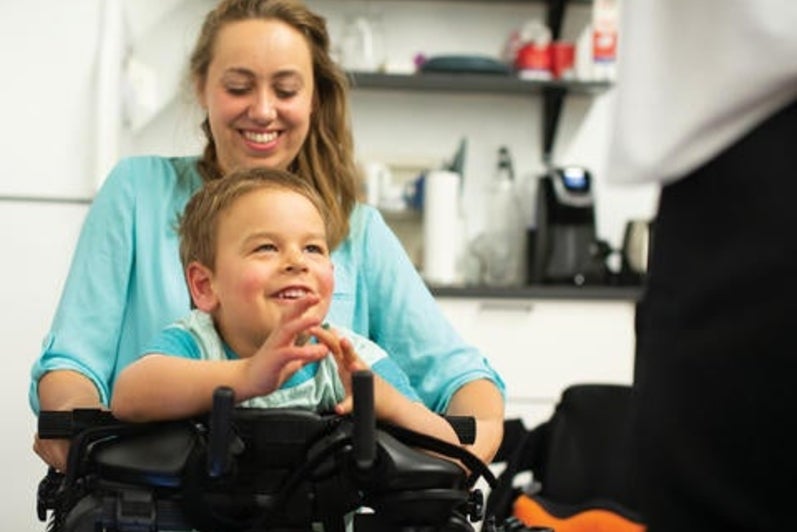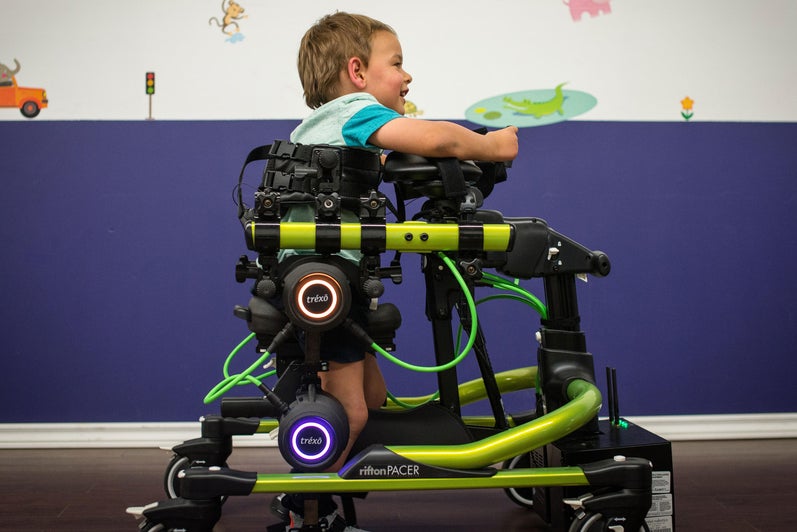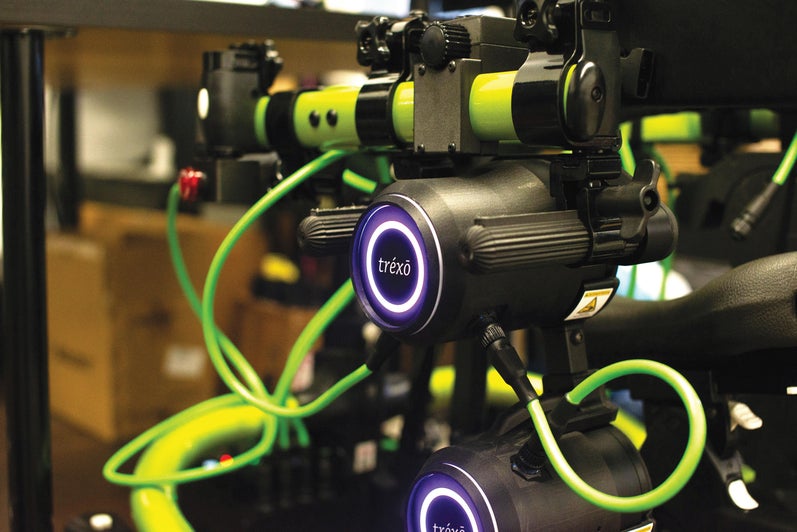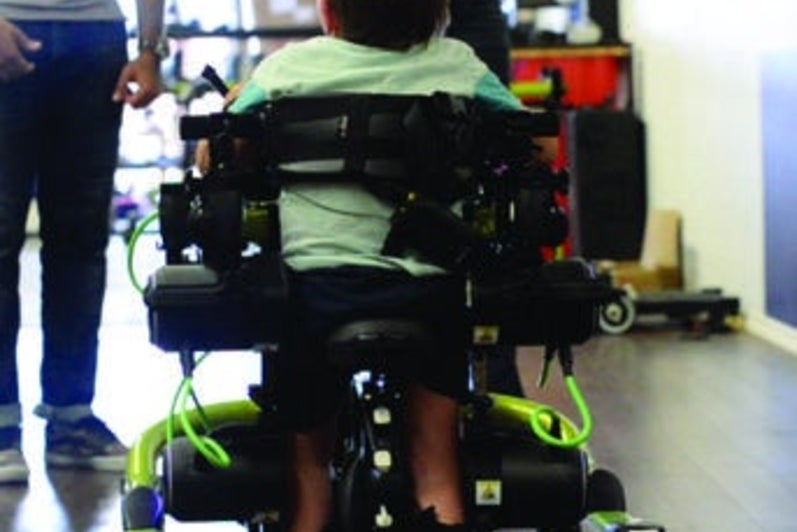Waterloo students and alumni build robots to help children around the globe walk
Written by: Namish Modi | Images by: Ryan Antooa
The idea behind an important start-up is born from a family connection.
Trexo Robotics was developed when a nephew of Waterloo alum, Manmeet Maggu (BASC ‘13) Praneit was diagnosed with cerebral palsy. This restricted Praneit’s ability to walk and given the negative impacts of sitting and laying down all day. Maggu and his family searched for remedies without any success.

Manmeet Maggu (BASc '13)
CEO of Trexo Robotics
“Walking is a human right, and our goal is to provide that right to everyone,” says Maggu, co-founder of Trexo Robotics, and a graduate of the Mechatronics Engineering program.
Maggu reached out to his friend, Rahul Udasi (BASC’ 14), a fellow Waterloo Mechatronics Engineering alum. As innovators, they began working on solutions right away. They built a prototype in 2016 and took it to India for Praneit to test.
The first prototype failed, but Udasi and Maggu adjusted, and it eventually worked. With the help of the robot Maggu and Udasi built, Praneit was able to take his first steps.
“That was the proudest moment of my life,” describes Maggu.
Interest started to build around Trexo and the inventors realized there were other children around the world, could not walk, that could benefit from this technology. The company faced many roadblocks after officially launching in 2019, but Maggu explains that “the glint in the parent’s eyes watching their child take their first steps in a Trexo, makes it all worth it.”
“Students are exposed to all of the latest technology, and bring fresh and unbiased perspective,” says Udasi.
They are also a key to innovation.
“They start looking into solutions on one project, but because students are great problem solvers, they often end up working on something completely different,” he says.

Rahul Udasi (BASc '14)
Co-founder of Trexo Robotics
What type of roles do students work in?
Students work in different areas and contribute to the overall improvement of the whole process. Udasi describes one of their co-op students who converted to a full-time staff member.
His role was to write software to change the way the Trexo walks through gait analysis discovered that the building blocks were not there to complete the task.
The student took the initiative and wrote a higher-level code that redesigned the drivers. This hugely impacted the process of using the Trexo, because patients can increase speed to walk faster.
Impact of the pandemic on the hiring process
Udasi describes that the increase in the Government of Canada’s Student Work Placement Program (SWPP) funding has supported their company. They continue to benefit from hiring students, even with the economic downturn.
“The pandemic also contributed to our hiring growth, and we have become more thorough in planning,” says Udasi. Trexo must be proactive in planning for the work term to enable students’ success.
Udasi meets with students every two weeks to set goals with them and ensure that they are on track. The company commits to providing hands-on experience to students that relate to their academic experiences.
Advice to smaller organizations
Trexo Robotics has hired students from different schools, but Udasi says that a key differentiator is that Waterloo students are more driven and want to try new things.
Co-op hiring is a unique advantage that you can leverage – (it) gives you access to amazing talents, and you can also build your future workforce.
Organizations can see an immediate and long-term return on investment, and there are also wage subsidies and tax credits that subsidize the cost of hiring students.







